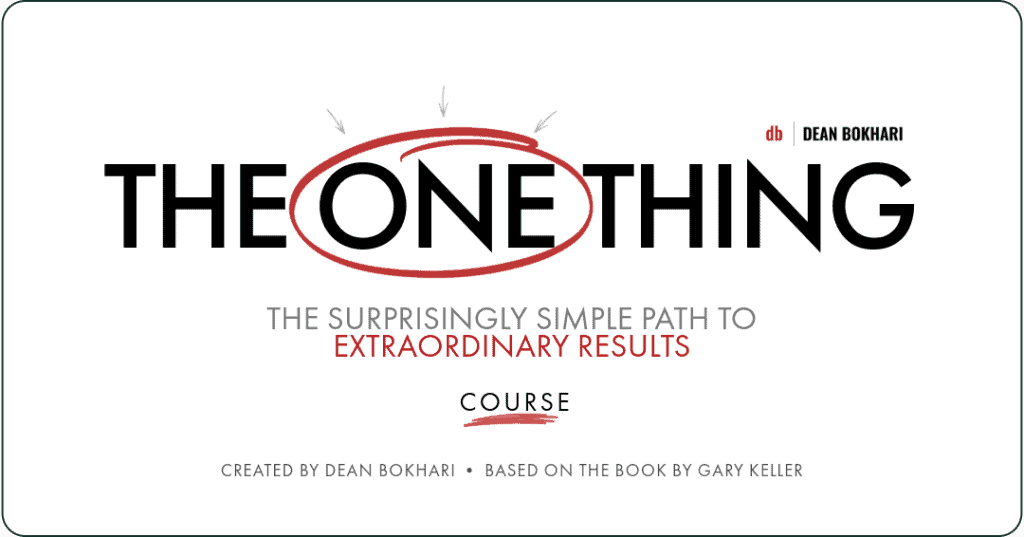4: Identify What’s Most Important + Give it Your Undivided Attention
Welcome to Lesson 4! Here’s what we’ve covered so far in this free course on The One Thing:
- 1. The One Thing + The Focusing Question
- 2. The Success Habit
- 3. Use the 80/20 Principle + Create a Success List
Here’s what we’re looking at in this lesson…
Identify What’s Most Important + Give it Your Undivided Attention
“… what’s happening when we’re actually doing two things at once? It’s simple. We’ve separated them. Our brain has channels, and as a result we’re able to process different kinds of data in different parts of our brain. This is why you can walk and talk at the same time. There is no channel interference. But here’s the catch: you’re not really focused on both activities. One is happening in the foreground and the other in the background. If you were trying to talk a passenger through landing a DC-10, you’d stop walking. Likewise, if you were walking across a gorge on a rope bridge, you’d likely stop talking.”
…. You can do two things at once, but you can’t focus effectively on two things at once. Even my dog Max knows this. When I get caught up with a basketball game on TV, he gives me a good nudge. Apparently, background scratches can be pretty unsatisfying. Many think that because their body is functioning without their conscious direction, they’re multitasking. This is true, but not the way they mean it. A lot of our physical actions, like breathing, are being directed from a different part of our brain than where focus comes from. As a result, there’s no channel conflict.”
— Gary Keller, The One Thing
Have you ever used the terms, “front and center” or “top of mind”? As in, “Let’s keep this front and center so it captures every visitor’s attention.” or “Employee engagement is top of mind for our leadership team this year.”
How about the term, “off the top”? As in, “Harry Mack spits the best flows, and they’re always off the top.”
When you say “front and center,” “top of mind,” or “off the top,” you’re right, in a very literal sense…
Because that’s exactly where focus occurs: in a part of the brain called the prefrontal cortex—which happens to be located right up top, at the very front—directly behind your forehead.
When you focus on something, you’re telling your brain to shine a spotlight on what matters most.
And although you can pay attention to two things at once, why would you want to? It doesn’t make you any more productive. In fact, it hurts your productivity, because focusing on more than one thing at a time imposes a condition on your brain called “divided attention.”
When you take on two things at once, your focus gets divided… Take on a third, and something gets dropped.
How often do we try to juggle more than one thing at a time?
How often do we allow other people to pull us away from what we KNOW is most important?
How often do we allow the buzzes and bings from our devices to DIVIDE our attention—keeping us from what matters most?
Answer: more often than we think.
Actionable insights
Here are a few simple tips for keeping yourself focused and on-task:
- Time-block your one thing and focus on it exclusively until you’re done.
- Do everything in your power to set up your workspace such that it allows you to focus on just ONE big thing at a time.
- Silence your phone if you don’t need it for work.
- Turn off all non-work-related notifications while you’re working.
- Put up a sign on your desk (or hang a hat on your door) to prevent people from disrupting your focus.

